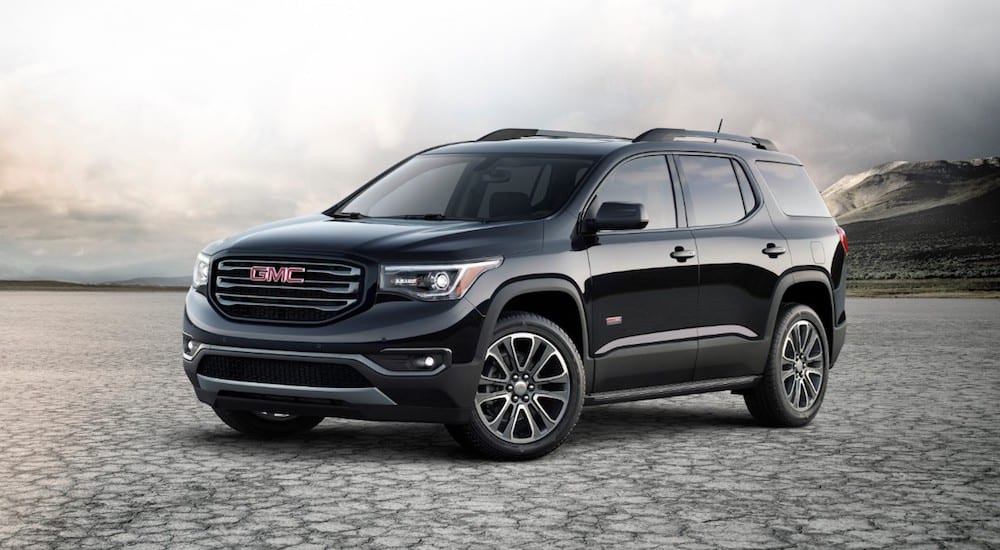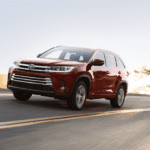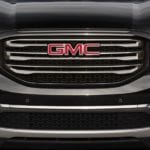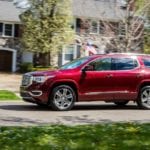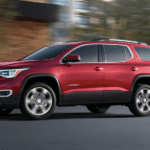As the top-dog automakers continue to ramp up production on SUV’s and trucks, it is becoming noticeably harder to delineate one model from the next much less for brand name recognition to take hold and eventually sway consumer attention. Many of the heavyweights are looking to hold on to their signature nameplates in hopes that their past vehicle’s history of high performance and reliability will be the assist they need to separate them from the SUV herds. Pair the growing herd with a consumer desire for personalization of vehicles to match their specific needs, and you have an almost unmanageable listing of facts and statistics for vehicles that appear very similar. GM and Toyota, both respectively in the top 3 for sales, have fallen sway to this individualistic craze; And as these two titans of the auto industry increase SUV production, they are also increasing the amount of tweaking and updating of previous designs. In the quest to produce just the right fit for each and every driver, they have unintentionally complicated the consumer purchasing process and have many quite frankly comparing apples to oranges. So to alleviate the confusion of comparing a mid-size crossover to a full-size SUV, here is a rundown of specs comparing two apple-to-apple vehicles with one from GM and the other from their rival Toyota: It is the 2019 GMC Acadia vs 2019 Toyota Highlander.
PERFORMANCE
A complete redesign in 2017 had GMC’s Acadia shedding weight, improving appearances with a more modern design, and increasing performance capabilities. The redesign for the second generations was key to the vehicles resurgence of popularity on the market and for the new year not much changes from previous alterations; GMC wisely moves into 2019 with the if it ain’t broke, don’t fix it mentality, but they have also added their own twist, you can sure as hell still improve it. The slimmed down Acadia from appearances and class distinction is brought to closer levels of its competing class, such as rival vehicles like the Toyota Highlander. The two vehicles actually match up pretty squarely when it comes to engine size but the Highlander leaves a little wanting in the performance category.
GM pulled a fast one and instead of going for the Texas-sized Motto, bigger is better, they opted for smaller. The 700 pounds the Acadia lost was pivotal in allowing GMC to keep a smaller 2.5-liter four-cylinder engine under the hood and consequently increase the vehicle’s fuel economy standards. The 2.5-liter engine delivers a decent 193 horsepower, more than enough for hauling around even a large sized family; the mid-size SUV handles well on even road conditions moving rather nimbly through traffic and accelerates well enough for drivers to not have to second guess passing cars on the highway. The main portent or take away from the Acadia’s smaller engine and lost poundage, once again with the assist, is its’ ability to maximize fuel efficiency. Here is where the Acadia gets interesting and completely out-classes the competition including Toyota’s Highlander. A highly recommended optional 3.6-liter V6 is available that turns this mid-size SUV into an animal. The strength of full-size truck with the body, speed, and stylish design appeal of a much smaller luxury sports vehicle. According to Car and Driver’s posted review, the 310 horsepower engine hustled their Denali test vehicle from 0 to 60 mph in 6.1 seconds. As far as handling, an adaptive suspension improves vehicle performance no matter the road conditions; from the interior, the suspension helps smooth over rocky or rough road rides, and you can even feel as it tightens up when driving more aggressively around corners at higher speeds.
Toyota’s Highlander, on the other hand, receives pretty good grades for both fuel efficiency and engine performance, but pretty good does not cut it when paired up with the GMC Acadia. One needs to be exceptional to pass muster.
Toyota offers three distinct Highlander engine models: a gas-powered four-cylinder, a gas-powered V-6, and a hybrid. The V-6 is a solid engine that delivers 295 horsepower on its easy-shifting eight-speed automatic transmission. Equipped with the V-6, the Highlander will pull out a commendable amount of midrange power that is good for passing and merging on the highway. But let’s reiterate that the engine offers decent enough power only when the pedal hits the floor; a conservative gas pedal can be non-responsive at slower speeds and makes the Highlander feel unnecessarily sluggish for city driving. According to Edmunds, Toyota’s mid-size SUV will hit 60 mph in about 7.9 seconds, which is once again about the middle of the road by industry standards. As far as handling, the Highlander once again performs as it should failing to meet up to the standards set by the Acadia. In their 2019 review, Edmunds compares the handling to that of a large scale boat; And although it never feels like your on uneasy or rough waters (the boat is large but it is sturdy), it can be a lot to handle on tight cornered city streets.
UTILITY
Cargo space is neither of these vehicles fortes, which is unfortunate as you would expect some room when purchasing a Sport Utility Vehicle. Both mid-size crossovers lean more toward large family cars than the full-size SUVs along these standards. The Acadia can achieve an average amount of cargo space with the second row folded down, but clearly the crossover is not made for long road trips unless it is a trip just for two. In order to utilize the maximum amount of cargo space of 79 ft ³, you would have to open the liftgate and fold down both the third and second-row seats to achieve unobstructed cargo room. As far as towing capacity, the Acadia measures up nicely against industry competitors at a 4,000 pounds limit which is more than enough power for a family hauling vehicle.
The same can be said for the Highlander which fails to meet up to industry standards for cargo space with limited space behind the 3rd row. By the noticeable absence of space between three rows of seated passengers, it is quite evident that Toyota did not design the Highlander for long family trips; however, it did keep in mind possible long hauls with a possible 83.2 cubic feet of loading floor when the third and second-row seats are folded down. As far as seating, the Highlander provides plenty of room to stretch-out for first- and second- class passengers; but the economy 3rd-row class will find adults with knees bent sideways and up in their chests. The Highlander does best the Acadia in towing capacity capable of hauling up to 5,000 pounds, average for most competitive mid-size SUV’s in the same class. It does seem like less of a feat, though, since all the Highlander is capable of is meeting industry standards.
TECHNOLOGY
Technology seekers young and old need look no further than GMC’s Acadia. For the adults, the infotainment system is quite possibly one of the easiest and intuitive displays on the market. By favoring features that you most constantly use while driving, the touchscreen is capable of simplifying its’ operation without dumbing it down. For passengers, the Acadia is outfitted with an abundance of USB ports, offers Apple CarPlay or Android Auto with smartphone integration, as well as onboard 4G LTE Wi-Fi. Passengers will have no problem keeping their devices charged and connected; and more importantly, the kids can stay distracted allowing the adults some much-needed peace of mind no matter the length of any trip.
The Toyota Highlander is a bit of a let down on the tech front. The infotainment system is user-friendly, and the touchscreen comes as either a base 6-inch or 8-inch upgrade on upper-level trims. The vehicle has all the latest and expected tech with Bluetooth phone, audio streaming, and five USB ports; with all that included, where is the letdown? I would normally state here that, of course, the Highlander offers Apple CarPlay or Android Auto through smartphone integration, and of course the mid-size SUV is outfitted with 4G LTE Wi-Fi; but Toyota does not offer these features on any trims from their Highlander lineup. A big drawback for the Highlander as it fails to step into the modern age and ignoring current consumer trends. Only the XLE trims and above get the optionable integrated navigation that comes with access to a selection of apps with limited internet connectivity.
THE TAKEAWAY
In our comparison of the mid-size SUV offerings from top automakers GMC and Toyota, there does not seem to a clear overall winner. Of course, this should go without saying as neither would be at the top of their game if they only produced middling vehicle lineups. The Toyota Highlander provides what is expected to in average performance and towing capability; but mind you, only as expected. The only real deal breaker with the Highlander is not offering WiFi or the expected Apple CarPlay and Android Auto apps. And although the GMC Acadia may not exceed expectations in all categories, its high-performance engine rating and available tech options make it the ideal family vehicle perfect city driving.
